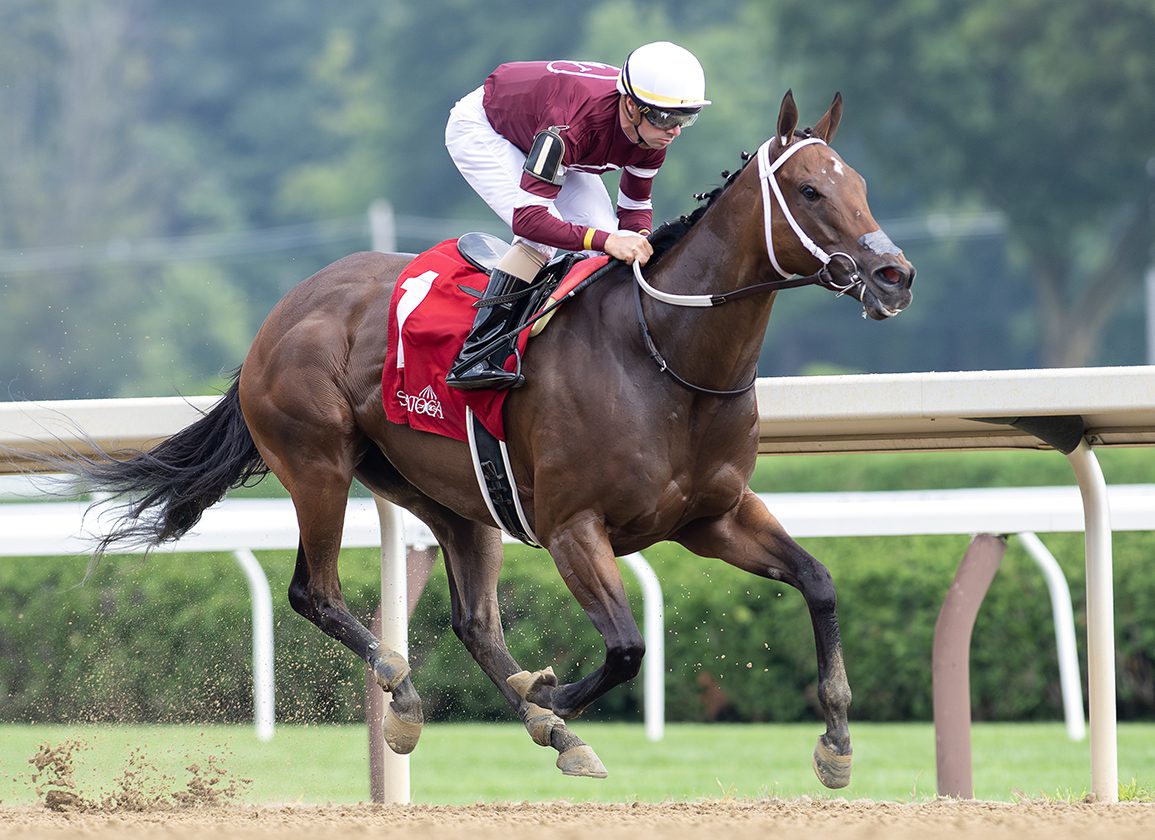Veterinarian Ryan Carpenter told Zoe Cadman on this week's TDN Writers' Room that Echo Zulu (Gun Runner) continues to do well five days after surgery to repair broken sesamoids in her left front leg.
“The surgery went very well,” Carpenter told Cadman on her weekly segment, 1/ST Things 1/ST at Santa Anita. “We did a fetlock arthrodesis and we used a new plate called a distal femoral plate, which is an application from the human world to incorporate the pastern joint in our repair, because we were really worried about the integrity of the pastern joint and our biggest fear in these kinds of cases is that they subluxate their pastern in the weeks following surgery and that usually results in support-limb laminitis. So we're very proactive to address that problem in order to hedge our bets down the line.”
That said, Carpenter underscored that Echo Zulu still has a long way to go.
“We still have a long road ahead of us as. I've said before, these horses really aren't out of the woods for the next four to six weeks,” Dr. Carpenter said. “There's a lot that can go wrong. but we take each day by day and so far she's done really well, bearing equal weight, using her casted leg well so we're very encouraged initially in how things look and we'll keep our fingers crossed that we continue to have positive days. Every positive day is one day closer to a successful outcome.”
A Visit With Echo Zulu on 1/ST Things 1/ST from Thoroughbred Daily News on Vimeo.
Cadman asked Carpenter what kind of patient Echo Zulu was.
“She has been awesome,” he said. “One of the things that I look for, honestly, is do they lie down and she has spent a lot of time lying down. Initially, she spent a lot of time lying down after surgery. She's up using her leg a lot more, so she's more comfortable, but she still lies down at night and sleeps and takes care of herself, and really when you're talking about these horses that develop laminitis, the best thing for a surgeon is a horse that lies down, because they unload their weight. They let the blood flow get to the feet and that's a real positive thing for us so hopefully she continues to do that in the coming weeks and that will bode well for us in the end.”
Cadman asked if there was any concern with her injuring herself trying to stand after lying down and Carpenter said that there was not.
“The accidents they have getting up are usually related to general anesthesia. So usually, these horses are asleep, and they're often uncoordinated when they get up. But if you look at a horse who stands up in the stall, it's actually a very slow, methodical process. They do it all the time. Horses lie down most of the time every day and they get up really well, and you watch them, and a lot of times, they'll protect a casted leg they'll do stuff to help themselves, and so the lying down in the stall, in the barn, is a good thing.”
Not a subscriber? Click here to sign up for the daily PDF or alerts.






